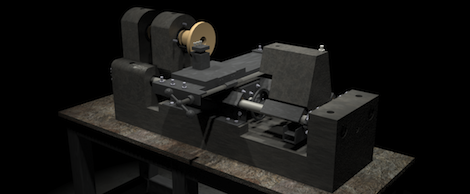
Meet [Quetico Chris]. He’s a master woodworker who likes to find his own alternatives to using power tools. Most recently, he was inspired by a fly-wheel from an old factory. He used it to build this foot powered wood lathe.
It works something like a foot powered sewing machine. There’s a lever for your foot which converts the downward force from your foot into a rotating force which drives the work piece. The mechanics of the lathe are pretty common, but we think the build techniques he uses are anything but. The video after the break shows each step [Chris] went through when crafting the human-power tool. His approach was to use wood as often as possible which includes foregoing modern fasteners for older joinery. He uses mortise and tenon, wood pinning, doweling, and a lot of puzzle-like tricks to get the job done.
We lack the skill and tools to replicate this kind of craftsmanship. We’re going to stick to letting a laser cutter form our wood connections.
Continue reading “Foot-powered Lathe Is A Tour De Force Of Joinery Techniques”
















